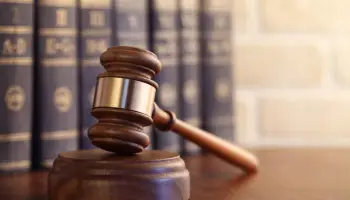Although at its heart, the principle of stare decisis is straightforward, its application is not without nuance and is not without bounds. The principle of vertical stare decisis, which holds that decisions made by higher courts are binding on lower courts, is one such example that has become firmly established in the American legal system. To some extent, it is because of this concept that the Supreme Court deserves the name “supreme.” Alternatively, the doctrine of horizontal stare decisis states that previous decisions rendered by courts at a particular appellate level (such as a federal court of appeals) should provide some precedent for cases considered by courts of the same appellate level. People tend to view horizontal stare decisis as less “controlling” than its vertical counterpart. As we go further in this article we will the two types of stare decisis, why it is important, and the difference between precedent.
What is Stare Decisis?
“Stare decisis” is a legal term for the idea of precedent, which has been around for a long time in common law and says that courts must make decisions based on what other courts have decided. From its Roman roots, this term means “to let the decision stand” or “to stand by what has been decided.”
Common law also says that judges in the United States and the United Kingdom must look at past decisions (called precedents) when making decisions about new cases with similar facts. Unless a higher court has reversed its judgment, lower courts in the same jurisdiction must follow it.
The Supreme Court and state high courts establish US legal precedents. Lower courts can create precedents, but their judgments are less binding and authoritative.
In the United States, all lower courts must adhere to decisions made by the Supreme Court. However, decisions made by state supreme courts are only binding on lower courts within that state and do not carry the same weight as decisions made by courts in other states.
Finally, it is possible for a precedent to be reversed in the future. On rare occasions, the US Supreme Court has overruled its own previous decisions because they were wrong. Around the middle of the 19th century, trial and court records began to be written down, kept, and put together. This made the idea of “stare decisis” even stronger. As you might expect, this method made it easier for future judges to use precedent-setting court decisions.
The implication of the Stare Decisis
Here is the implication of stare decisis:
- Judiciary systems tend to emphasize the principle of Stare decisis because it promotes the stable, objective growth of governing legal principles.
- The notion of “stare decisis” is an effort to guarantee that the public is guided by previously issued court decisions through the application of clearly established rules and principles in their everyday interactions.
- Stare Decisis teaches the public that key principles are constitution rather than human preference, supporting our legal system and governance.
- The principle of stare decisis states that the applicable rule of law need only be decided, rather than decided correctly.
- Stare decisis states that a rule of law only needs decision if it is wrong.
- Our adherence to a strict interpretation of precedent is a reflection of the principle of stare decisis. In other words, it’s the first argument for the idea that moral worth might be derived from such stable decision-making.
What Is Stare Decisis in Common Law?
As a matter of common law philosophy, “let the decision stand” (stare decisis) requires that courts be bound by earlier rulings on the same or similar issues. This is done so that justice can be administered with predictability, consistency, and stability.
Stare Decisis Example
The case of Roe v. Wade, in which the United States Supreme Court ruled that a woman’s right to choose whether or not to have an abortion is a constitutionally protected right, is one of the most well-known examples of stare decisis in the United States. In that case, the court established that a woman’s right to choose whether or not to have an abortion is a constitutionally protected right.
In spite of widespread public opposition to the decision in the more than 40 years since the landmark case in 1973, the Supreme Court – even when controlled by a conservative majority – has consistently upheld the Roe v. Wade decision as stare decisis, which determines the Court’s ruling in other abortion cases brought before the court since then.
However, it is important to keep in mind that the case of Roe v. Wade has also been used as a springboard for criticism of the principle of stare decisis. Many legal scholars say that the Supreme Court’s adherence to that case’s precedent has created a legally dubious practice.
The Dirks v. SEC decision by the Supreme Court sets the rules for prosecuting insider trading in American finance. Since then, this case has been used as a guiding precedent in this area of the law.
What Are the Reasons the Supreme Court Will Overturn Stare Decisis?
Reversing a lower court’s interpretation of the Constitution requires the Supreme Court to weigh a variety of factors. The Supreme Court might first look at how good the reasons for the lower court’s decision were. Secondly, when deciding whether to overturn a precedent, the Supreme Court has also looked at whether the rule or standard it creates for evaluating the constitutionality of a government action is too complex for lower federal courts or other interpreters to apply. Also, the Supreme Court may consider how different the precedent is from the Court’s previous decisions on similar constitutional issues, either because the reasoning behind the precedent has been weakened by later decisions or because the precedent is a recent outlier.
The Supreme Court has said a precedent can be overturned if the justices or society change their minds. Finally, the Supreme Court may consider whether it should retain a precedent, even if it is flawed, because overruling the decision would cause hardship to individuals, businesses, organizations, society at large, or officers of the Legislative, Executive, or Judicial Branches who relied on the decision’s guidance as to which actions and practices comport with the Constitution.
Supreme Court precedent is difficult to foresee since the Court really hasn’t specify the full list of situations under which it will overturn precedent or how it analyzes them. There is still a lot of mystery surrounding the Supreme Court’s approach to precedent, but the Justices have wide latitude in deciding whether or not to uphold established cases. The Supreme Court often compromises between following established precedents that parties can rely on and correcting mistakes if it can’t show how a previous decision differs from the current one.
Why Is Stare Decisis Important?
The principle of stare decisis is a key part of how the courts decide how to interpret and apply the law. Lawmakers try to be precise, but it’s hard to anticipate every event that could lead to an interpretation. Conflicting or even unconstitutional legislation is possible (as in, legislation that contradicts the US constitution).
Also, Large-scale stare decisis can influence history for good or ill. Brown v. Board of Education and other decisions have made it illegal to segregate students in public schools and to marry someone of the same gender in public spaces in the United States (in Obergefell v. Hodges). But, these landmark cases have also contributed to troubling eras in American history. In Plessy v. Ferguson and Korematsu v. United States (Dred Scott v. Sandford), the Supreme Court upheld laws that kept people of different races separate. It also upheld the internment of Japanese Americans during World War II. Also, read Policy Making: Definition, Process, Cycle, System (+Free Tips).
What Is a Precedent?
A precedent is the accepted interpretation of the law as established by prior judicial rulings. To illustrate, pretend there is a regulation that makes it illegal to ride a bike on a sidewalk, but the legislation doesn’t specify what kind of surface counts as a sidewalk. Let’s say there’s a dirt lane next to the road, and a cyclist is ticketed for using it. Does the law consider that to be a sidewalk, even though it’s made of dirt? It’s hard to say without seeing how the matter plays out in court, which would then guide future litigation.
If a cyclist is found using an unpaved surface like a sidewalk, it could set a bad example. The cyclist’s acquittal will establish that a dirt trail is not a sidewalk. In a stare decisis system, a previous ruling on the same issue would bind subsequent cases until overturned.
Defying a Tradition of Precedent
A professor of law and political science at Hamline University, David Schultz, found that out of “25,544 Supreme Court decisions and judgments after oral arguments,” the Court reversed its own prior verdicts only 145 times between 1789 and 2020. This represents a negligible fraction of one percent at most.
Schultz points to Brown v. Board of Education as the most well-known reversal in history.
By doing so, it overturned the 1896 judgment in Plessy v. Ferguson, which had upheld segregation on the basis of the “separate but equal” theory.
After the Supreme Court reversed Roe v. Wade, the 1973 judgment that legalized abortion, on June 24, 2022, the Dobbs v. Jackson Women’s Health Organization case became the second important case to diverge from stare decisions.
What Is the Difference between Precedent and Stare Decisis?
One serves as an example, or precedent, while the other is a principle or rule that mandates following the example set. Despite common usage, these words have different meanings and should not be used interchangeably. Assume Y and Z are engaged in a dispute.
- In exchange for Z’s promise to repay a set amount of money on a set date, Y loaned Z the money.
- Z is disobedient and has broken her promise.
- Y insists that Z not only compensate her but also pay interest on the late sum.
If both suits make it to the Supreme Court and the presiding judge orders Z to repay the loan but with no interest, this could set a precedent for future cases with similar issues. The resulting precedent can be safeguarded through the use of stare decisis.
To rephrase, the principle of stare decisis requires the Supreme Court to utilize the Y v. Z decision as a precedent whenever it hears a case between a lender and a borrower in which the borrower refuses to return the loan (horizontal stare decisis). Furthermore, the Supreme Judicial Court’s decision would be a binding precedent in lower courts within the same judicial system.
What Are the Pros and Cons of Stare Decisis?
Stare decisis has a number of benefits including
#1. Helps Conserves Both Time and Resources
Stare decisis is a legal principle that requires judges to look to previous rulings for guidance rather than relying on their own intuition. Also, courts may be able to make quicker decisions on complex matters as a result of this.
#2. Justice and Fairness
The principle of stare decisis was put in place to guarantee uniformity in the outcomes of similar legal decisions. Also, the goal is to help the judicial system enforce the law more effectively, to help people understand the law better, and to make people believe that the judicial system treats them fairly, which means that all cases will be handled the same way.
#3. Flexibility
Although it is assumed that courts will generally adhere to precedents, stare decisis leaves room for reversing previous decisions and setting new ones. As a result, the law is able to develop naturally through time.
Some of the disadvantages of stare decisis Include
#1. Ineffective and Illegitimate Decision-Making
Unlike legislation, which is passed by governments, judicial decisions in the highest courts are often made by individuals who have been chosen for that position rather than elected. This could make them less answerable to the public for the choices they make.
#2. Rigidity
Stare decisis can be a useful tool when it allows for more maneuverability. On the other hand, there are situations when it makes it more difficult to reverse a poor choice. While courts are not bound by precedent, the theory is deeply embedded in the American legal system, and judges will typically require compelling reasons before overturning a prior ruling.
#3. Past-Centric Focus
By blindly adhering to practices that were established decades or even centuries ago, we risk failing to account for developments in society.
Countries that Use Stare Decisis
Stare decisis is used in a number of countries, however, its prevalence varies widely. Take a look at these few instances:
- Austria: supports, but does not require, judicial deliberation informed by precedent (the “doctrine of stare decisis”).
- Germany necessitates a strict application of previous decisions by the German Federal Constitutional Court.
- England: enforced a stringent form of stare decisis until 1966, when it was relaxed. Precedents have largely been upheld recently, but they can be reversed.
- The United States: respects predecessors but does not require blind adherence to them.
Conclusion
Let the decision stand; stare decisis is a pillar of the American legal system. Simply put, stare decisis is the idea that judges and courts should follow the examples set by past decisions and opinions. Consistency in the law and predictability of judicial rulings are both benefits of adhering to precedents rather than letting judges make choices at will.
Stare Decisis FAQs
What branch of government is stare decisis?
The Supreme Court is the source of most of the rulings used in the doctrine of stare decisis.
What Are the Two Types of Stare Decisis?
The concept of stare decisis incorporates both horizontal and vertical parts.
Which of the following best explains the principle of stare decisis?
It incentivizes judges to adhere to precedent when making decisions about cases.
Similar Articles
- INTELLECTUAL PROPERTY INFRINGEMENT: Meaning, Types, How to Avoid It, and Examples
- Lingerie Brands: 49 Inexpensive Lingerie Brands In The US
- What are the Generally Accepted Accounting Principles: All You Need
- DISTRESSED PROPERTIES: Tips and Tricks.
- HOURS OF SERVICE RULES: Ultimate Guide






